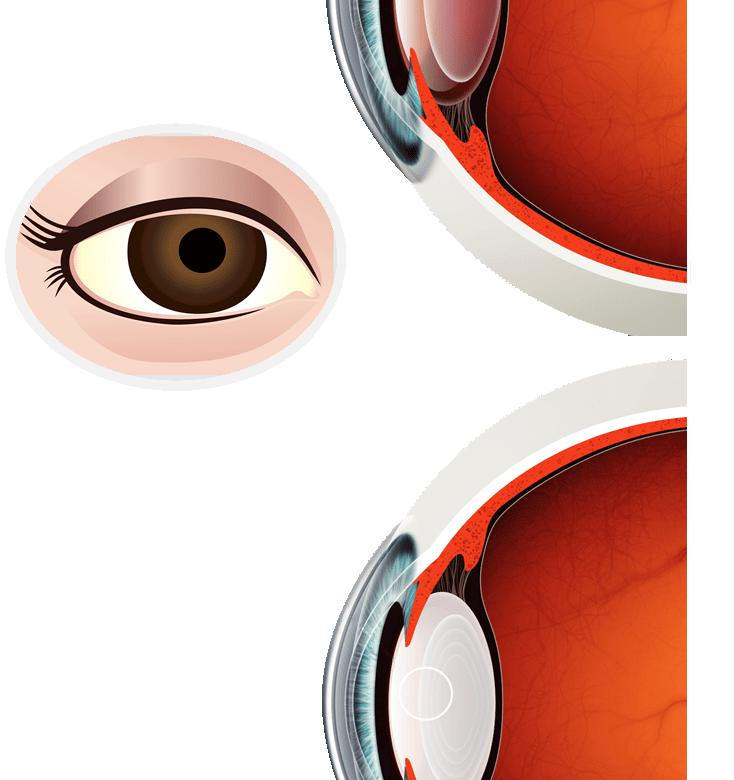So, your eye doctor has told you that a cataract is forming in one (or both) of your eyes. Maybe it came as a surprise, which is common as cataracts may be very small and have little to no effect on vision in early development, or maybe cataract symptoms are what caused you to see the eye doctor to begin with. Either way, you may have a lot of questions.
What exactly is a cataract? Who gets them? How are they treated? Here, we will review the basics about cataracts by answering these questions and more.
WHAT is a cataract?
The lens of the eye, the part that focuses the light rays that pass through it, is typically clear. The lens is mostly made up of water and proteins. As we age, some of the proteins in the lens may start to clump together and form a small cloudy area. This is known as a cataract.
Cataracts usually start out quite small, but over time they may grow larger and cloud more of the lens, making it harder to see.

WHO gets cataracts?
Cataracts that form due to injury to the eye can occur at any age. It is also possible to be born with cataracts, known as congenital cataracts. But the majority of cataracts occur as a natural part of the aging process. In fact, by age 65, most people will have developed changes to the eye’s natural lens, which may eventually lead to the formation of a cataract.

WHY do cataracts make life so difficult?
Cataracts can cause symptoms such as faded or yellowed vision, blurry or dull vision and can even cause glare and seeing halos around lights, making it difficult to drive after dark. Because cataracts block light entering the eye, it can become harder to see in dim light. Over time, even everyday tasks like reading or cooking can become difficult as symptoms worsen.
For many people, changing eyeglasses or contact lens prescriptions can help for a time, but they may find that they need stronger prescriptions more frequently than before a cataract formed.

HOW are cataracts treated?
When cataracts prevent full participation in everyday life due to poor vision, most doctors will recommend cataract surgery. Cataract surgery involves removing the eye’s natural lens and replacing it with an artificial lens known as an intraocular lens or IOL.
There are different types of IOLs available, ranging from a traditional IOL, also known as a monofocal IOL, which corrects vision at one distance only, to more advanced IOLs, which correct vision at a range of distances from near to far.

The IC-8 lens advantage
If you’ve been diagnosed with a cataract and your vision has started to affect your ability to enjoy life, talk to your doctor about cataract surgery. Be sure to discuss the best replacement lens option for you. Learn more about the IC-8 lens. It is designed to provide a natural range of vision from near to far, including mid-range vision needed to read a computer screen. With the IC-8 lens, one may achieve continuous and seamless vision at all distances.



